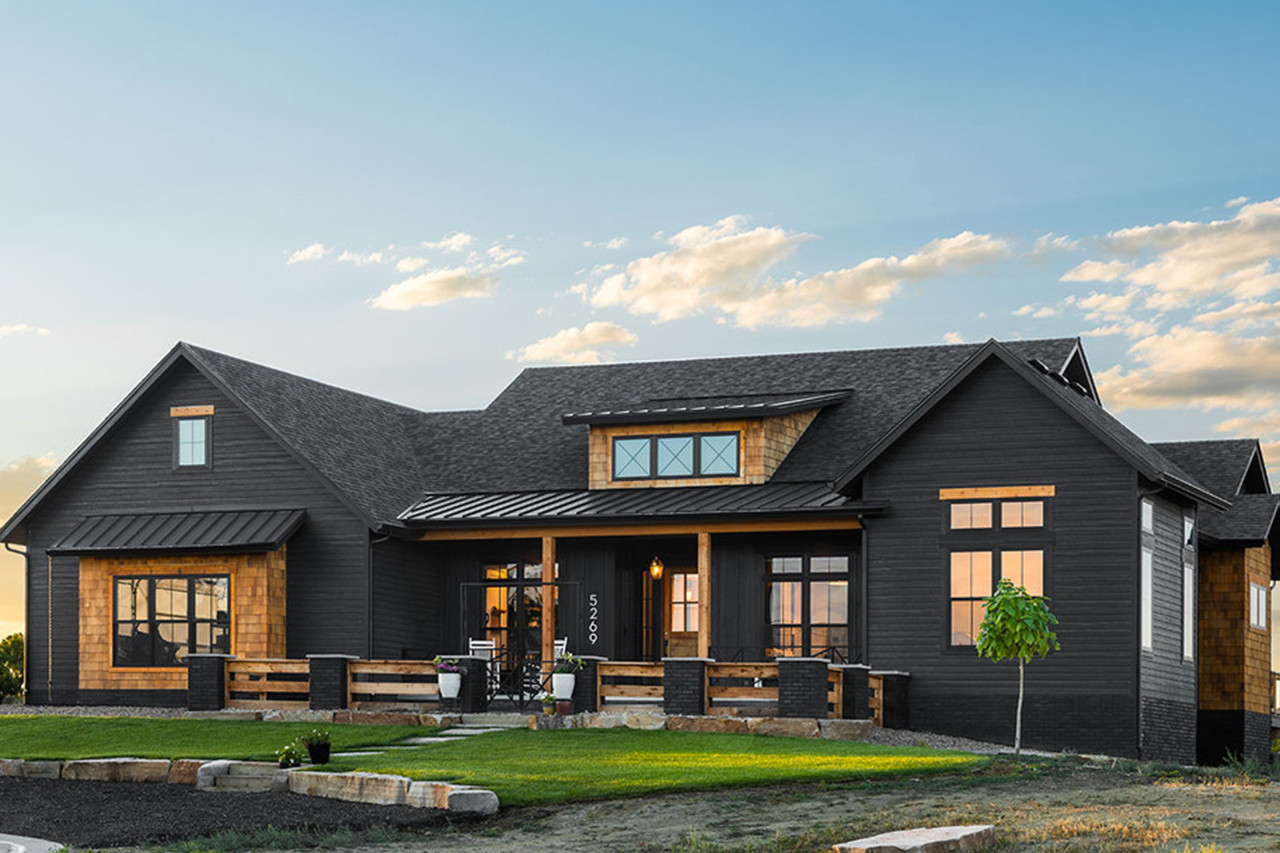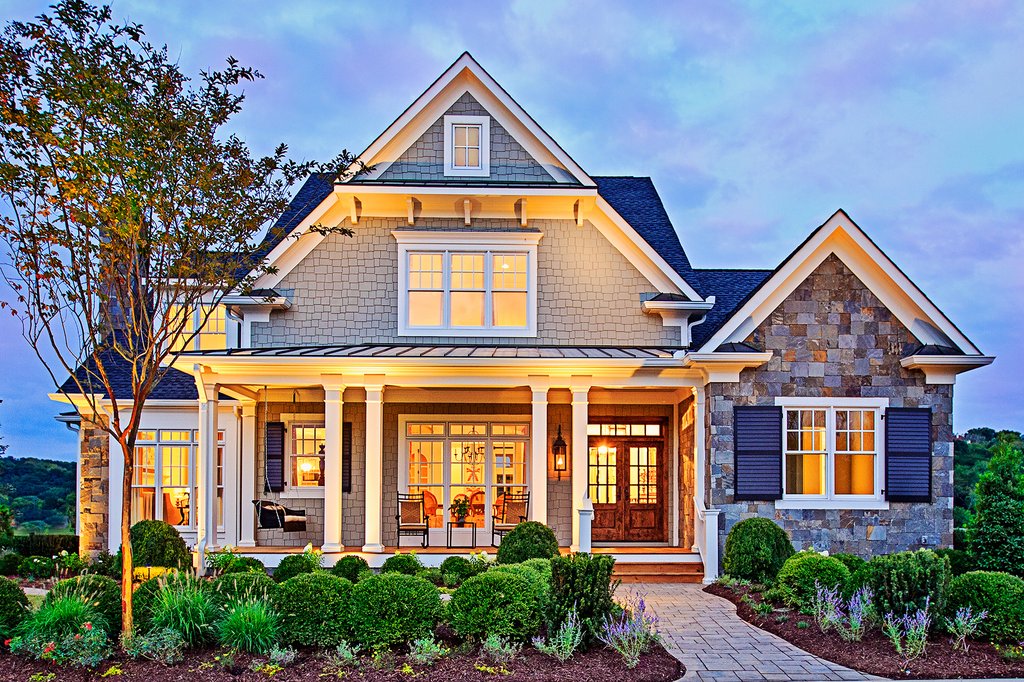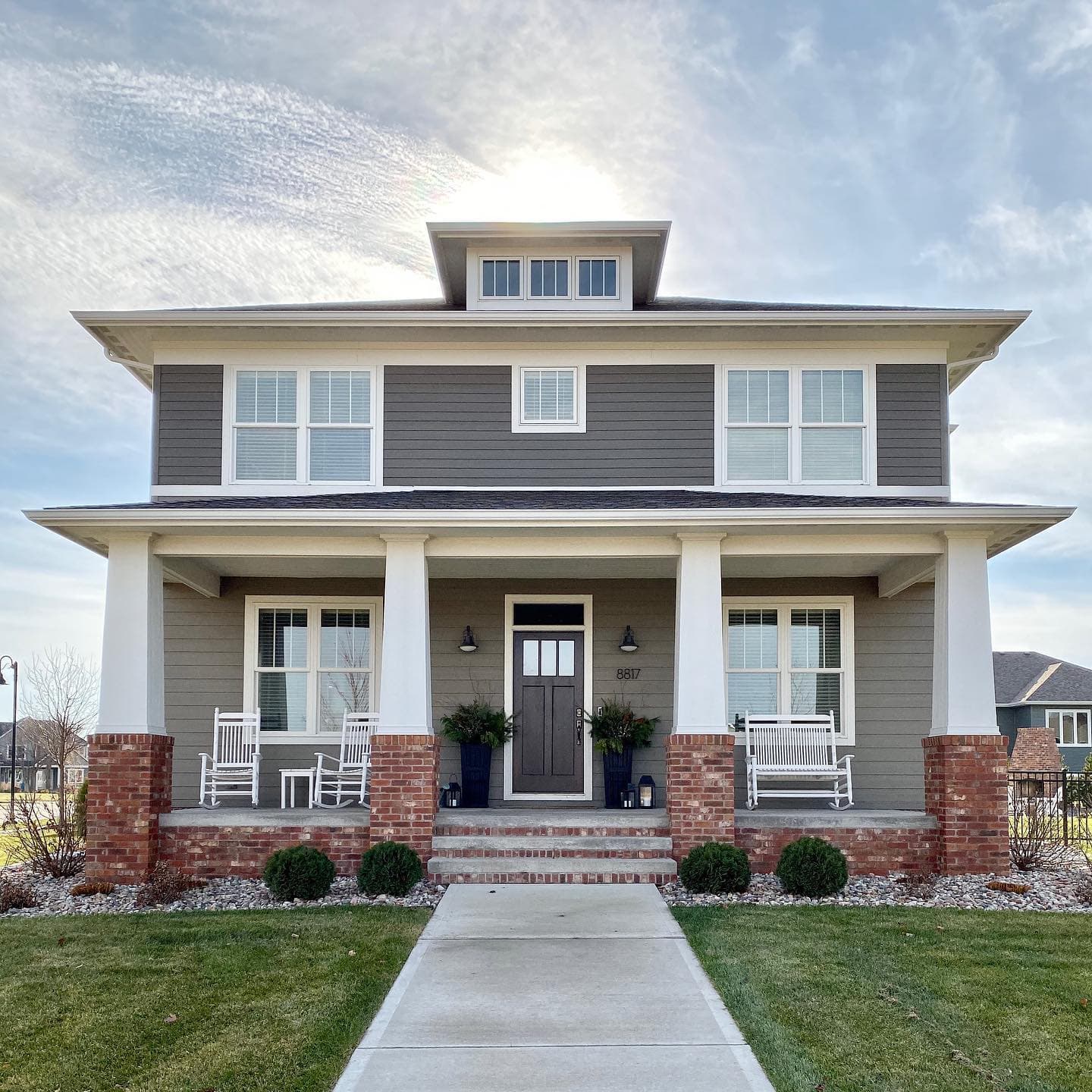Why a craftsman style house Stands Out in Residential Architecture
Wiki Article
The Duty of Arts & & Crafts Architects in Elevating Architectural Services in Residential Design
Arts and Crafts architects greatly influence domestic style with their dedication to workmanship and sustainability. They focus on handmade information and all-natural products, which boost both aesthetic appeals and area identification. By entailing customers in the layout procedure, these architects develop one-of-a-kind space that resonate with individual preferences. This strategy questions about the future trajectory of residential architecture and its potential impact on community characteristics. craftsman style house. What exists in advance for this ageless style approach?
The Principles of Arts and Crafts Architecture
The essence of Arts and Crafts architecture depends on its dedication to workmanship and simpleness. This architectural motion arised in the late 19th century as a response to automation, stressing the worth of handmade information and natural materials. The principles of Arts and Crafts architecture prioritize performance and consistency with the setting. Frameworks usually feature low-pitched roofings, vast eaves, and exposed rafters, promoting a sense of unity with nature.Artisans played a significant role in this style, typically incorporating ornamental elements like tarnished glass, tiles, and woodwork, which reflect local workmanship. The shade scheme often tends to be natural and restrained, allowing buildings to mix seamlessly into their surroundings. On top of that, the design urges open flooring strategies and common areas, fostering a sense of togetherness. Overall, the concepts of Arts and Crafts architecture commemorate the charm of simpleness and the importance of human connection to both nature and neighborhood.

Sustainable Practices in Residential Style
While the need for eco liable living continues to grow, sustainable practices in property style have actually obtained substantial grip amongst architects and homeowners alike. Architects are increasingly including energy-efficient technologies and sustainable products right into their layouts, intending to minimize carbon impacts and improve power conservation. Techniques such as passive solar design, eco-friendly roofings, and rain harvesting systems are ending up being common elements of contemporary domestic architecture.The selection of in your area sourced materials minimizes transport emissions and sustains regional economic situations. Focus on natural light and air flow not only boosts indoor air quality however also lowers reliance on fabricated illumination and environment control systems. These sustainable techniques show a dedication to protecting the setting while offering homeowners with comfy, efficient space. As awareness of environmental concerns grows, the assimilation of sustainability in residential style is positioned to end up being a specifying characteristic of modern architecture, led by the principles developed by Arts and Crafts architects.
Customization and Personalization in Home Layout
Customization and customization in home layout have become vital trends in action to the growing need for distinct living environments that reflect private preferences and way of livings. Property owners progressively look for to customize spaces that resonate with their individualities, leading to a more significant link with their home. craftsman style house. This movement motivates architects to engage customers in the layout procedure, cultivating collaboration that guarantees the final result personifies the property owner's visionAspects such as bespoke designs, personalized products, and customized coatings permit for a varied array of expressions in residential design. Arts and Crafts architects play a pivotal role in this evolution, emphasizing craftsmanship and high quality. Their concentrate on integrating artistic elements with functionality guarantees that each home is not only cosmetically pleasing yet additionally distinctly matched to the occupants' requirements. As a result, this focus on personalization improves the overall residential experience, developing rooms that are both individual and enduring.

The Impact of Arts and Crafts Architects on Community Looks
As neighborhoods develop, the impact of Arts and Crafts architects greatly shapes their aesthetic landscape. By highlighting handmade information, natural products, and standard building methods, these architects create homes that resonate with their surroundings. Their designs typically integrate regional plants, appearances, and shades, cultivating a feeling of consistency between developed environments and nature.The Arts and Crafts movement advertises area identification Source through architectural connection. By motivating house owners to embrace similar layout concepts, communities develop a cohesive personality that improves visual allure. This basics architectural harmony not just enhances the aesthetic experience yet likewise imparts a sense of satisfaction among residents.
The emphasis on sustainability and craftsmanship in Arts and Crafts architecture straightens with contemporary values, making these layouts relevant in modern settings. Ultimately, Arts and Crafts architects add substantially to the total appeal and cultural honesty of communities, leaving a lasting influence on their aesthetic heritage.

Future Fads in Arts and Crafts Architecture
With an enhancing focus on sustainability and personalization, future patterns in Arts and Crafts architecture are positioned to blend standard workmanship with modern advancement - craftsman style house. Architects are most likely to prioritize green materials, using redeemed wood and natural rock to boost the sustainability of residential styles. The assimilation of clever home innovation will come to be commonplace, allowing for customized living experiences without endangering aesthetic stabilityAdditionally, the rebirth of artisanal strategies will foster a renewed recognition for handmade components, such as bespoke kitchen cabinetry and custom ceramic tile work. Future designs may also reflect an emphasis on community-oriented spaces, motivating communication and link amongst citizens. Outside living locations will acquire importance, perfectly integrating nature into the home environment. As Arts and Crafts architecture evolves, it will certainly remain to recognize its roots while adapting to contemporary needs, developing unified rooms that mirror specific worths and way of lives.
Frequently Asked Questions
What Motivated the Arts and Crafts Activity in Architecture?
The Arts and Crafts motion in architecture was influenced by a reaction against industrialization, stressing handmade high why not try this out quality, natural products, and a go back to conventional craftsmanship, intending to develop unified, functional spaces that commemorated creativity and individuality.Just how Do Arts and Crafts Architects Collaborate With Customers?
Arts and crafts architects collaborate with customers with open dialogue, focusing on personal demands and aesthetics. They stress workmanship and sustainability, promoting a partnership that incorporates the client's vision with the engineer's expertise in layout and materials.What Products Are Typically Made Use Of in Arts and Crafts Houses?
Usual materials in Arts and Crafts homes consist of all-natural wood, stone, and block, stressing workmanship and natural aesthetic appeals. These elements produce a warm, inviting ambience, showing the activity's dedication to high quality and simplicity in style.Just how Do Arts and Crafts Styles Boost Indoor Living Spaces?
Arts and Crafts styles boost indoor home by promoting natural light, open layout, and handcrafted details. These aspects foster a warm, welcoming environment, motivating a connection between residents and their atmospheres with thoughtful, functional looks.What Are Some Famous Instances of Arts and Crafts Architecture?
Famous examples of Arts and Crafts architecture include the Wager Residence, Greene and Greene's masterpiece in California, and the Robie Home by Frank Lloyd Wright. These frameworks display handcrafted information and harmony with nature, defining the motion's significance.Report this wiki page